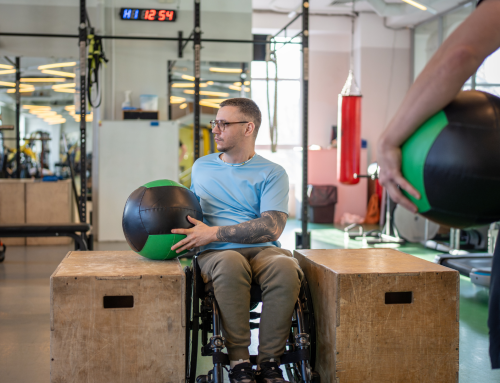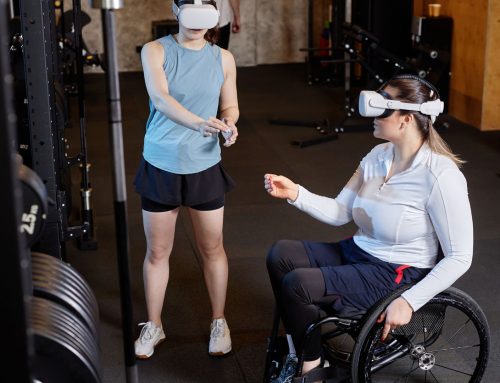This week, we are examining the relationship between the vestibular system and balance in recognition of Balance Awareness Week – a week where we try to grow awareness of the impact balance disorders have on millions of people around the world.
Did you know that up to 35% of adults 40 years and older – over six million Canadians – have a vestibular problem at some point in their lives¹? As physiotherapists and movement specialists, we are focusing our efforts on education around vestibular disorders that can affect a person’s balance at home, work, school, and the community and treatment options we can offer to help restore a life rebalanced.
How does the body maintain balance and equilibrium?
The act of balancing helps us maintain physical equilibrium and allows people to accomplish basic tasks in addition to higher-level tasks. From walking in a straight line, going up/down stairs, performing household chores, playing sports with your kids, or preventing falls, our balance system is always engaged.
Related Topic: Improving Balance and Posture Makes Daily Activities Safer
Our ability to balance is based on three systems working together:
- Sensory or Proprioceptive System: muscles and joints telling us where our body is in space; feedback from our body.
- Visual System: our eyes providing us information on the landscape and our orientation to the world.
- Vestibular System: our inner ear and the anatomy that tells us what our head position is relative to gravity and accounting for linear and non-linear acceleration.
Registered physiotherapist David Friesen demonstrates an advanced balance exercise – standing on one leg while holding a medicine ball and rotating his head to scan the room – employing all three systems used in balance.
How does the vestibular system affect balance?
Of all the systems involved in balance, the vestibular system is the least understood by the public and health professionals, alike. Why? It may be due to the fact that it’s very hard to explain and it’s difficult to see the physiology at work. “We can’t help what we can’t see” has been the adage used for many years when it comes to balance, dizziness, and, vertigo.
The vestibular system is complex. It is comprised of nerve bundles, canals, and labyrinths that all speak to one another to tell our brain what position our head is in space; it’s position relative to gravity. If there is dysfunction in the vestibular system, you can bet that you won’t be feeling steady on your feet and that you may feel a decrease in balance.
The classic example of your vestibular system at work would be the feeling you get after coming off a twisting or spinning roller coaster or carnival ride. It is not uncommon to feel wobbly and off-balance after one of these rides. That’s because the signals coming from your vestibular system (inner ear) is sending messages to your brain that you are still in motion. This, of course, can get really confusing and you may feel like you are still on a roller coaster, when in fact you’re standing still on solid ground.
A person with a vestibular disorder may experience ongoing, chronic, or intermittent bouts of imbalance, vertigo, or disequilibrium. Imagine feeling like you are on roller coaster that you can’t get off while trying to manage your daily activities. An estimated 33% of all adults with chronic imbalance have problems performing basic activities of daily living². The good news is that by shining a light on these disorders, we can support and treat those who need it.
Related Topic: How Vertigo Can Throw Your Whole World for a Loop
Vestibular Disorder Treatment
At Propel Physiotherapy, many of the clients that we provide treatment for have been involved in high impact accidents or collisions. This mechanism of injury can disrupt the vestibular system’s anatomy and the processing centre it speaks to: the brain.
Our trained physiotherapists can help to address the vestibular system and its dysfunction, in addition to how the brain is speaking to this system using vestibular rehabilitation. We use positioning strategies, corrective vestibular exercises, habituation exercises, manual therapy, prescription of gait aids, and modalities to decrease the signs or symptomology of vestibular disorders.
Physiotherapist and Clinic Founder Kyle Whaley demonstrates the Dix Hallpike Maneuver for vertigo and nystagmus. Once the diagnosis of vertigo due to BPPV is made, the treatment of choice depending on the canal that is affected is the Canalith Repositioning Procedure or Epley maneuver. This usually follows the maneuver to make the diagnosis – the Dix Hallpike Maneuver.
By using these techniques, your physiotherapist can improve your tolerance to positions that may make you feel off-balance. In addition, certain techniques and exercises can also target and improve the relationship and signals your head position (vestibular system), eyes (visual system), and sensory system have with one another.
If you think you may be suffering from a vestibular disorder and want to speak more about it, please feel free to contact Propel Physiotherapy to speak with one of our physiotherapists. In the spirit of Balance Week, “Let’s make vestibular visible!” and take action towards a healthy and balanced life!
For more information about Balance Awareness Week, visit the Vestibular Disorders Association.
Written by

















